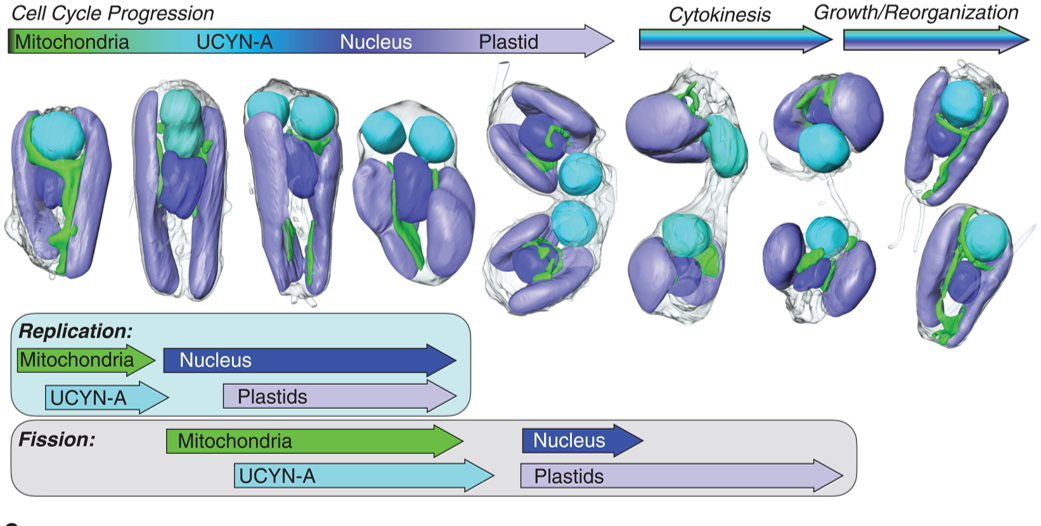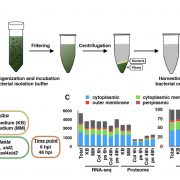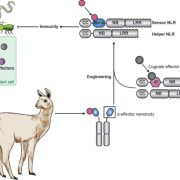A nitrogen-fixing algal organelle
Coale et al. provide an exciting peek into the evolution of a nitrogen-fixing organelle (called a nitroplast) in their studies of a tiny marine alga, Braarudosphaera bigelowii and its endosymbiont cyanobacterium, Candidatus Atelocyanobacterium thalassa (UCYN-A). Plant biologists are familiar with other nitrogen-fixing endosymbionts, such as the rhizobia that reside in plant nodules. And of course, we are all familiar with the mitochondria and plastids, descendants of ancient endosymbionts that have lost their ability to live independently of the host cell. The interesting new findings presented by Coale et al. suggest that the UCYN-A, long-considered to be an endosymbiont, has evolved into an organelle. The authors used soft x-ray tomography (SXT) to image the single-celled alga during division. They found that the single endosymbiont/nitroplast in each cell replicates alongside the other cellular compartments, and one each of the resulting structures is passed into each daughter cell. What cements this as an organelle is that many genes required for its viability and function (such as genes required to synthesize amino acids) are encoded in the host genome and imported into the nitroplast. Interestingly, these proteins are marked by a novel transit peptide that directs them to the nitroplast, analogous to how nuclear-encoded plastid or mitochondrial proteins are imported. Besides providing yet another example of how “life finds a way”, this study opens the door to the possibility of introducing nitroplasts into crop plants and alleviating a major agricultural challenge. (Summary by Mary Williams @PlantTeaching) Science 10.1126/science.adk1075










